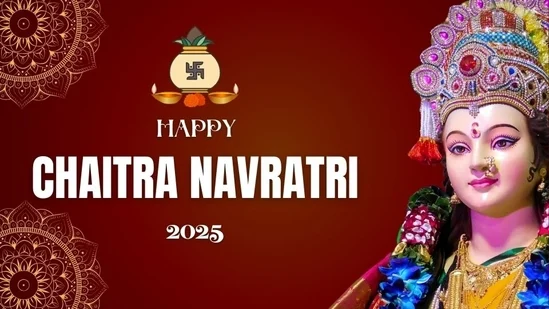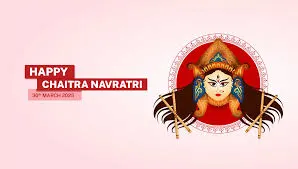Explore the significance of Chaitra Navratri 2025. Discover the rituals, fasting practices, and cultural traditions that make this Hindu festival special.
Chaitra Navratri is one of the most anticipated festivals in India, celebrated with great enthusiasm and devotion. Falling in the month of Chaitra in the Hindu lunar calendar, it marks the beginning of a new year for many Hindus and is a time for spiritual reflection and renewal. In 2025, Chaitra Navratri will be observed from March 28 to April 5, and devotees across India are preparing to observe the sacred nine-day festival with fervor.
What is Chaitra Navratri?
Chaitra Navratri is a celebration dedicated to the worship of Goddess Durga, symbolizing the victory of good over evil. According to Hindu mythology, it is believed that Goddess Durga fought and defeated the demon Mahishasura, restoring peace and harmony to the world. The festival celebrates this triumph and honors the various forms of the Goddess, each representing a unique aspect of divine strength, power, and protection.
This festival is marked by a series of rituals, fasting, and prayers, creating a spiritually uplifting atmosphere for millions of devotees. It is celebrated with various regional variations across India, each adding its unique cultural touch to the event.

Significance of Chaitra Navratri
Chaitra Navratri is not only a time of prayer but also a time for self-purification. It is believed that observing the rituals and fasting during these nine days brings divine blessings and prosperity. Devotees seek the goddess’s blessings for health, wealth, and success, as well as to gain inner strength to overcome obstacles in their lives.
The festival is also significant because it marks the beginning of the Hindu New Year in several regions, such as Maharashtra, Uttar Pradesh, and Karnataka, bringing with it a sense of renewal and hope for the year ahead.
Key Rituals During Chaitra Navratri
Chaitra Navratri is a time for worship, reflection, and deep devotion. The main rituals include:
- Ghatasthapana (Kalash Sthapana): The first day of Chaitra Navratri begins with the installation of a Kalash (sacred pot), which signifies the Goddess’s presence. This ritual is followed by the chanting of mantras and prayers to invoke the Goddess’s blessings.
- Fasting and Feasting: Devotees observe fasting during the festival, refraining from grains, non-vegetarian food, and alcohol. Special foods like sabudana khichdi, kuttu ka atta, and fruits are consumed instead. The fast is seen as a way to purify the body and focus on spiritual growth.
- Navaratri Puja: Every day, prayers are offered to different forms of Goddess Durga, collectively known as the Navadurga. These include the worship of Shailaputri, Brahmacharini, Chandraghanta, Kushmanda, Skandamata, Katyayani, Kalaratri, Mahagauri, and Siddhidatri, each representing a different divine aspect.
- Dandiya and Garba Dances: In regions like Gujarat and Maharashtra, the festival is marked by vibrant dance forms like Dandiya and Garba, where people gather in groups to dance to devotional songs. This adds a festive atmosphere to the occasion and symbolizes the goddess’s victory over evil.
- Kanya Puja and Sindoor Ceremony: The eighth day of Chaitra Navratri, known as Ashtami, involves the worship of young girls, symbolizing the presence of Goddess Durga. They are treated with respect, and food, gifts, and blessings are offered to them. On the final day, Dussehra or Vijayadashami, marks the conclusion of the festival, symbolizing the victory of good over evil.
Regional Celebrations of Chaitra Navratri
The way Chaitra Navratri is celebrated can vary greatly across regions in India:
- North India: In places like Uttar Pradesh and Delhi, the festival is associated with the worship of Goddess Durga and Lord Ram. Special prayers and the recitation of the Ramayana are an integral part of the celebrations.
- Gujarat: In Gujarat, the festival is widely known for the traditional Garba dances. The celebrations include the Rath Yatra and devotional singing, with community participation being a key feature.
- West Bengal: In Bengal, the last day of Navratri is marked with Durga Puja, where large-scale worship of Goddess Durga takes place with grand processions and cultural performances.
- Maharashtra: Devotees in Maharashtra observe the festival with processions, feasts, and the popular Dandiya dance, with the worship of the goddess being a central theme.

Spiritual and Personal Significance
Chaitra Navratri is a time for personal growth and introspection. The nine days of fasting, prayer, and devotion are believed to purify both the mind and body. It is a time for individuals to reflect on their lives, seek inner peace, and cultivate positive energy. For many, the festival offers a fresh start for the new year, making it an important occasion for spiritual and personal renewal.
Conclusion
Chaitra Navratri 2025 offers a perfect opportunity to immerse oneself in the spiritual richness and cultural traditions of this ancient festival. Whether through fasting, prayer, or participating in festive celebrations, Chaitra Navratri serves as a reminder of the importance of devotion, resilience, and hope in overcoming life’s challenges. As millions of Hindus observe this sacred festival, they reaffirm their commitment to righteousness and embrace the promise of renewal and prosperity.





